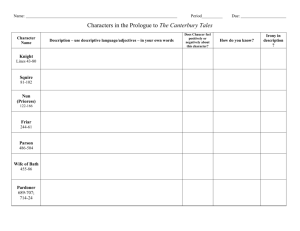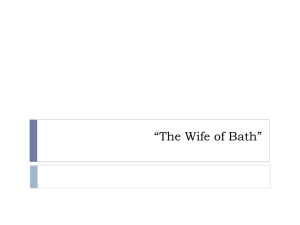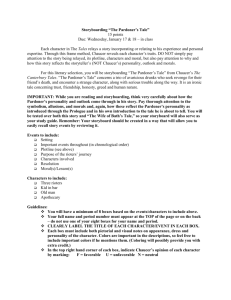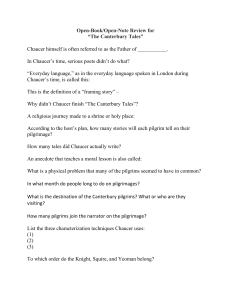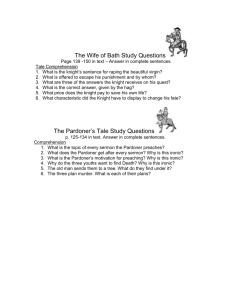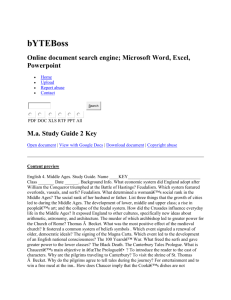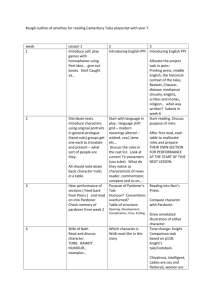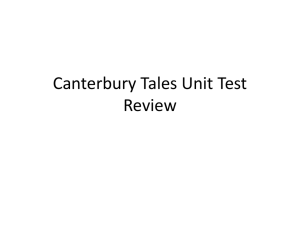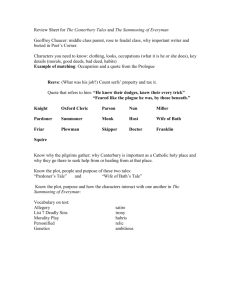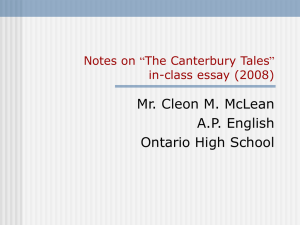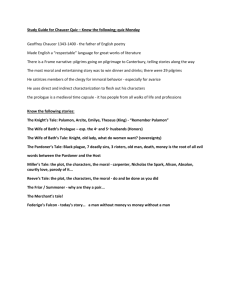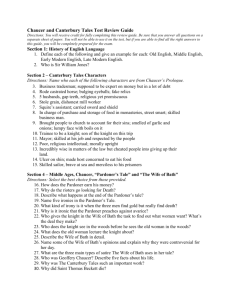Name: Study Guide for Chaucer's The Canterbury Tales
advertisement
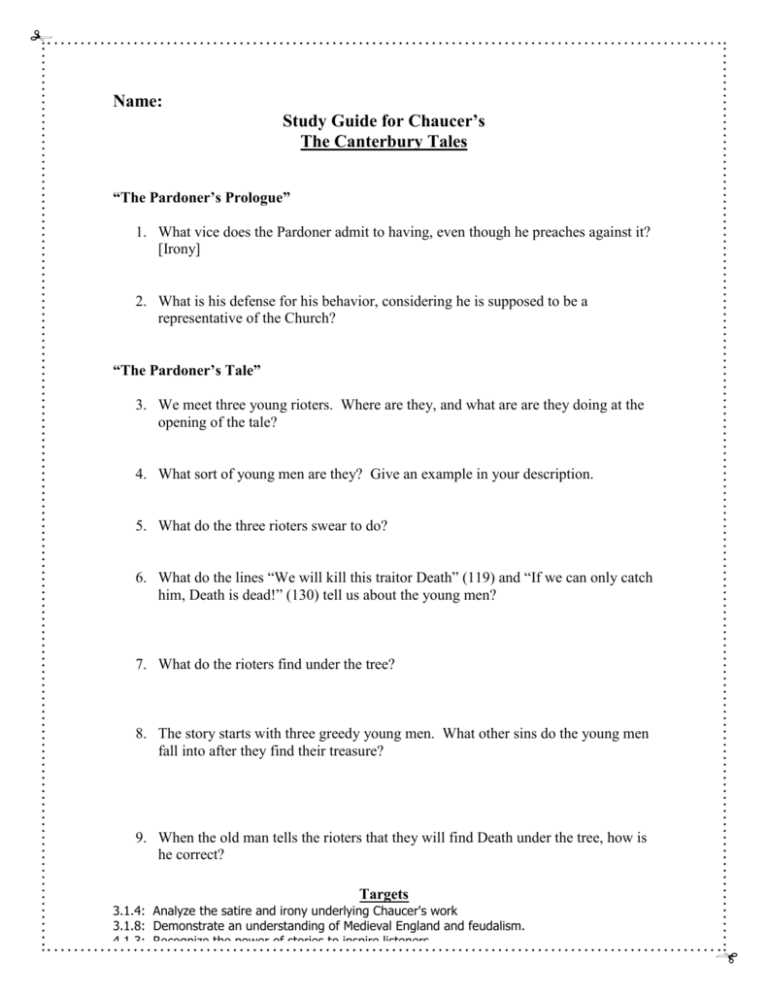
Name: Study Guide for Chaucer’s The Canterbury Tales “The Pardoner’s Prologue” 1. What vice does the Pardoner admit to having, even though he preaches against it? [Irony] 2. What is his defense for his behavior, considering he is supposed to be a representative of the Church? “The Pardoner’s Tale” 3. We meet three young rioters. Where are they, and what are are they doing at the opening of the tale? 4. What sort of young men are they? Give an example in your description. 5. What do the three rioters swear to do? 6. What do the lines “We will kill this traitor Death” (119) and “If we can only catch him, Death is dead!” (130) tell us about the young men? 7. What do the rioters find under the tree? 8. The story starts with three greedy young men. What other sins do the young men fall into after they find their treasure? 9. When the old man tells the rioters that they will find Death under the tree, how is he correct? Targets 3.1.4: Analyze the satire and irony underlying Chaucer's work 3.1.8: Demonstrate an understanding of Medieval England and feudalism. 4.1.3: Recognize the power of stories to inspire listeners. 10. In addition to avarice, or greed, against what sins does the Pardoner’s Tale preach in its final lines? 11. The Pardoner is quite open about his ability to mislead and swindle common people. Does the Pardoner’s motive take away from the moral truth of the story? Explain. 12. By showing the Pardoner as he does, what is Chaucer saying about the role of the Church during this time period? “The Wife of Bath’s Tale” 13. The Wife of Bath’s story has a different setting than the frame story. Describe the time period in which the Wife sets her tale. 14. What does the Knight do, and what is to be his punishment? 15. What will he have to do to escape the consequences of his actions? 14. On his quest, what are some of the answers he finds as to what women want from men? A. C. B. D. 15. According to the old woman, what is the real answer to what women want? 16. How is her answer a reflection of a woman’s place during the medieval period? 17. In answer to the Knight’s insults, the old woman defends herself. How does she defend herself against each of his problems with her? A. lack of nobility (line 255): B. poverty (line 323): C. age (line 353): D. ugliness/ foulness (line 359): 18. The old woman finally gives the Knight a choice. What is the choice, and how does the Knight choose? 19. In what way does Chaucer’s initial description of the Wife of Bath in “The Prologue” and the tale she tells suggest that she is an unusual woman for her time? 20. From the Knight’s behavior, what problems with the Estate system do you think Chaucer is pointing out?
